Introduction to Molecular Dynamics with GROMACS
Introduction to Molecular Dynamics with GROMACS
Introduction to Molecular Dynamics with GROMACS
You also want an ePaper? Increase the reach of your titles
YUMPU automatically turns print PDFs into web optimized ePapers that Google loves.
eally that it is a trade-off. PME is great, but also clearly slower than cut-offs. Longer cut-offs are alwaysbetter than short ones (but slower), and while switched interactions improve energy conservation they introduceartificially large forces. Using PME is the safe option, but if that’s not fast enough it is worth investigatingreaction-field or cut-off interactions. It is also a good idea <strong>to</strong> check and follow the recommendedsettings for the force field used.<strong>GROMACS</strong> uses a separate preprocessing program grompp <strong>to</strong> collect parameters, <strong>to</strong>pology, andcoordinates in<strong>to</strong> a single run input file (e.g. em.tpr) from which the simulation is then started (thismakes it easier <strong>to</strong> prepare a run on your workstation but run it on a separate supercomputer).As we just said, the command grompp prepares run input files. You will need <strong>to</strong> provide it <strong>with</strong>the parameter file above, the <strong>to</strong>pology, a set of coordinates, and give the run input file some name (otherwiseit will get the default <strong>to</strong>pol.tpr name). The program <strong>to</strong> actually run the energy minimization ismdrun - this is the very heart of Gromacs. mdrun has a really smart shortcut flag called “-deffnm” <strong>to</strong> use a string you provide (e.g. “em”) as the default name for all options. If you want <strong>to</strong>get some status update during the run it is also smart <strong>to</strong> turn on the verbosity flag (guess the letter,or consult the documentation). The minimization should finish in a couple of minutes.Carefully equilibrating the water around the proteinTo avoid unnecessary dis<strong>to</strong>rtion of the protein when the molecular dynamics simulation is started,we first perform an equilibration run where all heavy protein a<strong>to</strong>ms are restrained <strong>to</strong> their starting positions(using the file posre.itp generated earlier) while the water is relaxing around the structure. Thisshould really be 50-100ps, but if that appears <strong>to</strong> be <strong>to</strong>o slow you can make do <strong>with</strong> 10ps (5000 steps)here. Bonds will be constrained <strong>to</strong> enable 2 fs time steps. Other settings are identical <strong>to</strong> energy minimization,but for molecular dynamics we also control the temperature and pressure <strong>with</strong> the Berendsenweak coupling algorithm. This is mostly done by extending the parameter file used above:------pr.mdp------integra<strong>to</strong>r = mdnsteps = 5000dt = 0.002nstlist = 10rlist = 1.0coulombtype = pmercoulomb = 1.0vdw-type = cut-offrvdw = 1.0tcoupl= Berendsentc-grps= protein non-proteintau-t = 0.1 0.1ref-t = 298 298Pcoupl= Berendsentau-p = 1.0compressibility = 5e-5 5e-5 5e-5 0 0 0ref-p = 1.0nstenergy = 100define= -DPOSRES



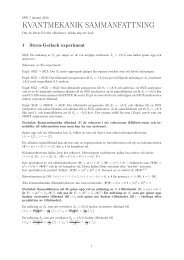

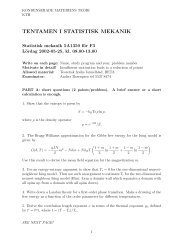
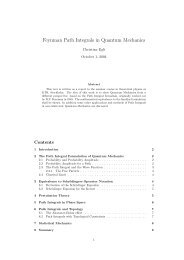
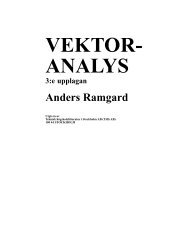
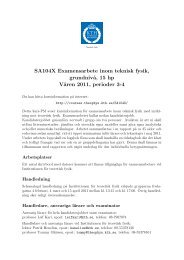

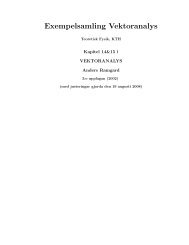

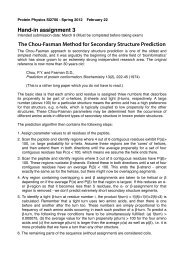

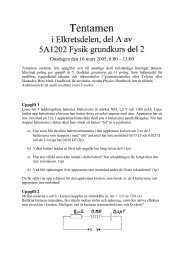
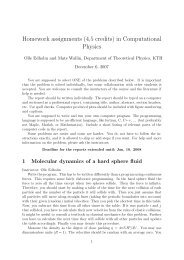
![[VAR]=Notes on variational calculus](https://img.yumpu.com/35639168/1/190x245/varnotes-on-variational-calculus.jpg?quality=85)